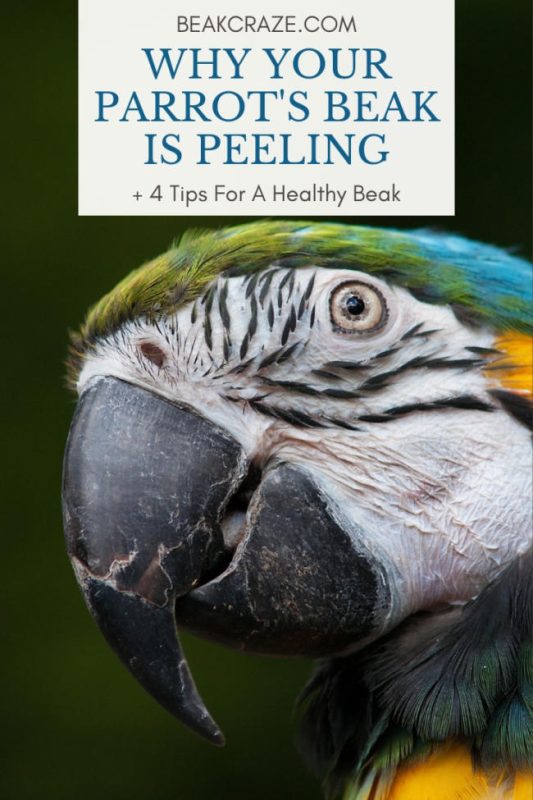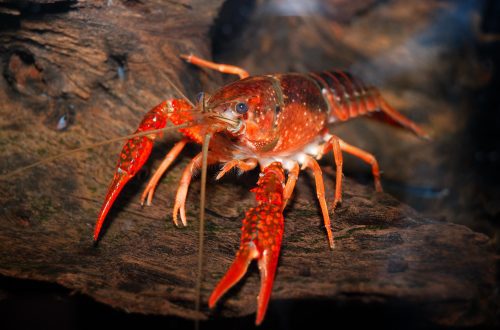
The parrot’s beak exfoliates: possible causes and their elimination
Owners of budgerigars and other pet birds often face health problems with their beloved pets. To avoid this, you need to carefully examine the feathered. With regular inspection, you can see when the beak begins to peel, which will help prevent its further destruction.
Construction and inspection
The beak of a budgerigar is a cornea that covers the jaw area on both sides, and inside it is a bone. The upper beak contains the jaw, intermaxillary and nasal bones, and the mandible contains smaller bones.
The main difference between budgerigars and other poultry is the presence of a tendon and ligament located between the bones of the beak and the skull itself. It is worth noting that this part of the body is different for different types of parrots, because its formation is influenced by the environment.
In order to notice various bird health problems in time and not start to panic when the beak will peel off, you need to conduct a regular inspection, paying attention to several signs.
- Lethargy. In a sick budgerigar, the eyes will be constantly covered, and the feathers will be ruffled.
- Beak condition. If it flakes, that’s a bad sign.
- Damage or loss of feathers.
If you notice at least one of the listed signs, urgently take your budgerigar to an ornithologist. The doctor will make a diagnosis, answer why the disease has developed, and give recommendations for treatment.
Layering
Many owners of budgerigars notice that their beak exfoliates. The main reason for this phenomenon is the lack of vitamins. Accordingly, it is necessary to review the diet of the budgerigar. Due to an unbalanced diet metabolism is disturbedand calcium deficiency. If the parrot’s beak exfoliates precisely for this reason, it is necessary to additionally give the feathered vitamin and mineral complex and germinated wheat grains. Crushed eggshells and honey, as well as fodder yeast, are suitable as a prevention of stratification.
In some cases the beak of the budgerigar begins to exfoliate in case of tick infestation. We are talking about parasites belonging to the species Knemidocoptes. These mites are usually seen near the eyes, cloaca, and paws. A sick bird suffers from severe itching. On closer inspection, you can see that the beak is deformed or exfoliated. This is due to the fact that ticks gnaw through passages here, due to which the homogeneous structure of the beak is destroyed, and roughness is noticeable on its surface. If you do not start timely treatment of the budgerigar, the elimination of the deformity will be impossible.
If you find a build-up or damage to the beak, you must do the following:
- first you need to carefully look at the parrot, because the tick could hit other parts of the body;
- all parrots that are sitting in the same cage should be placed separately so that they do not become infected;
- beak sharpeners, toys and perches must be removed from the cage, for the duration of treatment it is necessary to buy such attributes from plastic or make them yourself from wood;
- the cage is carefully treated with soapy water and appropriate pharmaceutical products; during this treatment, the budgerigar is transplanted into a box or another cage;
- damaged areas of the body are lubricated with aversectin ointment 1 time in 3-4 days;
- it is important to carry out general cleaning in the apartment.
It should be remembered that slight delamination may indicate molting, which is observed throughout the life of the bird. It is for this reason that it is necessary to place pebbles or twigs in the cage so that the pet can grind off its beak. Also, a possible cause of stratification is beriberi, or rather, a lack of vitamin A.
Defectiveness and overgrowth of the beak
In some cases, in addition to delamination, there is a curvature. The cause of such a defect is mechanical damage that occurred at an early age during feeding. Also, the defect can develop due to infectious diseases.
The bird’s beak often peels off or exfoliates due to liver disease. In this case, the surface structure becomes uneven and stepped.
If the bird is injured, causing a circulatory disorder or hemorrhage, the beak may darken. It is also sometimes stained naturally when coloring foods are eaten.
One of the serious defects is the overgrowth caused by the previously mentioned mites. You can notice the problem at an early stage by small scratches. In this case, one must take into account the fact that such damage can occur with inaccurate absorption of food.
That make sure there are no defects, it is necessary to pay attention to the mineral stones and cones located in the cage and intended for grinding. If you can see from them that the parrot does not sharpen its beak, you should visit an ornithologist for trimming. This procedure is completely harmless. Moreover, thanks to her, the bird will not encounter problems in the future when absorbing food.





